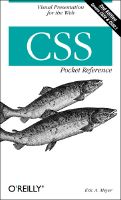Creative Dissidence
Published 20 years, 11 months pastSelf-described ‘Web hobbyist’ François Briatte recently conducted a survey of ten sites, comparing them on 25 different points, and has published the results. I suggested that those responsible for the sites that were reviewed might write up their perspectives on the rankings and their dissidence levels, as Dave Shea and Jon Hicks have already done. I tied for John Gruber for third, which amuses me.
I’ve seen some criticism of this survey scattered about, with two points made:
- The survey is too small, only examining ten sites.
- The survey is too limited in terms of the kinds of sites studied (all ten are basically Web design blogs, to one degree or another).
True, François picked ten sites instead of several hundred, all ten being sites that François reads regularly, and looked at them in detail. Well, at least he went to the effort of doing it and publishing the results for free. Don’t like the number of sites, or the sites surveyed, or the questions that were asked? Fine. Do your own survey and publish the results. We’re waiting. I’d actually like to see more such surveys, especially those done with the impressive degree of thoroughness and thought that François displayed.
Here are my thoughts about meyerweb’s rankings and the criteria in general; I’ll stick to commenting on those points where I differed from the crowd, or else where I think there’s something particularly interesting to note.
- Are links underlined / are hovered links underlined / do visited links differentiate? (yes on all three)
-
As it turns out, my site is acting as a mirror for François’ browser preferences: I don’t assert link styles at all. What I’d be interested to know is how many of the surveyed sites follow the same path. My guess is few, or none. Even Jakob‘s style sheet asserts link styles.
- Is the layout fixed in width? (no)
-
Mine is not, and that leaves me in a strong minority. I prefer a layout that flexes with the browser window, and I suspect I always will. This does mean that the layout can start overlapping itself at very narrow window widths, but then a fixed-width design forces a scrollbar at narrow widths. Which is better? I’ve made my choice, of course, as have all the others surveyed. I’ve yet to decide one way or the other is truly better, although of course many people have very strong opinions.
- Is there a search box? (no)
-
I should probably add one, but for some reason it just never seems like a critical priority. There is a search function on the archive pages for “Thoughts From Eric”, but that comes built into WordPress. It may be that my reluctance stems from the fact that I’d probably end up using a Google search box, which seems like cheating. I should probably get over myself and just do it.
- Are “steal these” buttons used? (yes)
-
Dave Shea’s reaction was: “Ugh. Please, no.” I think they’re useful, both for RSS feeds and for the “XFN Friendly” badge. I’d also like to think they’re well integrated into my design (such as it is), although obviously that’s a matter of taste.
- Does the navigation bar use image rollovers? (no)
-
Nope, it’s all text. I may one day get fancier about the design (don’t hold your breath) and if so, I’ll probably have some kind of image rollover for the navigation. At the least, I’d use a Sliding Doors-type decoration, which could count as an image rollover effect.
- Is there a print stylesheet? (yes)
-
I have to admit to some surprise that the majority of the sites didn’t use one. Mine is pretty low-key, doing basic things like preventing the sidebar from being printed. I wish more sites did that kind of thing. A link-filled sidebar is as useless on the page as it is useful on the Web.
- Is the page UTF-8 encoded? (no)
-
I’m still kickin’ it ISO-8859-1 style. This is in part because when I tried to enable UTF-8 encoding a while back, all my characters got thoroughly mangled. I spent some time trying to fix it, and then dropped back to 8859, which I knew would work. If I ever figure out how to do UTF-8 correctly, I’ll probably switch over.
- Is the DOCTYPE Strict / is the page XHTML / is there an XML prolog? (no on all three)
-
I use HTML 4.01 Transitional, so clearly there wouldn’t be an XML prolog. Even if I used XHTML, there wouldn’t be one, since its presence triggers quirks mode in IE6/Win—thus the 100% agreement among the surveyed sites on its absence.
So why HTML instead of XHTML? Because there continue to be no major advantages to valid XHTML over valid HTML, which is what I strive to attain. In some sense, there are disadvantages, albeit of a minor variety—I find trailing slashes on empty elements and the lack of attribute minimization to be annoying. If I’d learned XHTML first, I’m sure I wouldn’t care about them, and would wonder why HTML was deficient in those areas. Since I taught myself HTML when the cutting edge was HTML 2.0, I have some fairly deeply ingrained habits that cause me to lean toward HTML. I also have a decade’s worth of documents that I don’t really feel like trying to convert to XHTML just so I can claim big markup geek bragging points. Sure, there are tools that will do it for me. Then I’d have to go back and check to make sure the tools didn’t mangle anything.
I’ve gotten the occasional critical e-mail about this over the past couple of years, chastising me for not being a role model in this area. I like to think that I am. I’m trying to show, by example, that there’s nothing wrong with using HTML 4.01 as long as you’re using it correctly. If your HTML is valid, you’ll have no more trouble converting it to a ‘pure’ XML format than you will if XHTML is your starting point. So I stay with HTML, and probably will for some time to come.
One other point: the education of my quotes is entirely due to WordPress, and in pages that aren’t part of WP I don’t have educated quotes. C’est la mort.
I’ve already written François to congratulate him on his work, which I think is a good look at the underpinnings of the sites surveyed and sheds some light on points that don’t get discussed very often—or when they are, it’s in needlessly polarizing ways (witness the various flame wars over fixed width vs. liquid width, HTML vs. XHTML, and so on). It’s refreshing to see someone collect some facts, do a little analysis, and freely share the results.


